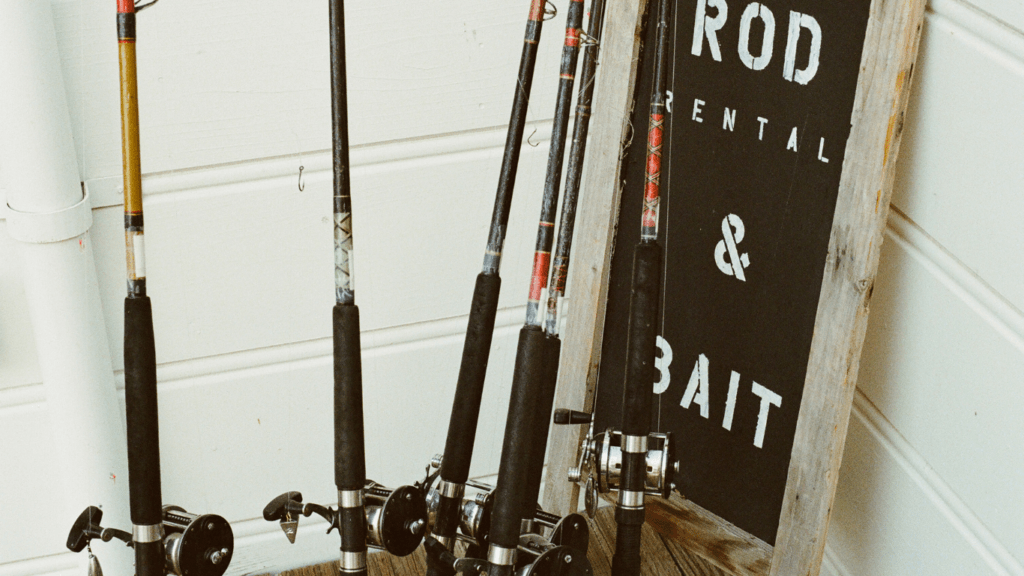Getting started with fishing can be an exciting journey, but choosing the right fishing rod and reel is crucial for beginners. As an avid angler, I know the importance of selecting equipment that suits your needs and skill level. In this guide, I’ll share valuable tips on how to pick the perfect fishing rod and reel combination to enhance your fishing experience.
When it comes to selecting a fishing rod, factors like the type of fish you’re targeting, the fishing technique you prefer, and your budget play a significant role. I’ll walk you through the key considerations to help you make an informed decision. Additionally, finding the right reel to complement your rod is essential for smooth casting and reeling in your catch. I’ll provide insights on matching the rod and reel for optimal performance on the water.
Understanding the Basics of Fishing Gear
When it comes to fishing gear, understanding the basics of fishing rods and reels is essential for beginners looking to improve their fishing experience. The right combination of rod and reel can make a significant difference in your success on the water.
Types of Fishing Rods
I’ll explain the different types of fishing rods to help you choose the most suitable one for your needs. Here are the main types of fishing rods you’ll come across:
- Spinning rods
- Baitcasting rods
- Fly rods
- Telescopic rods
Each type has its unique features and is designed for specific fishing techniques and target fish species. Understanding the differences will help you select the appropriate rod for your fishing adventures.
Types of Fishing Reels
Moving on to fishing reels, let’s explore the various types available in the market. Here are the common types of fishing reels:
- Spinning reels
- Baitcasting reels
- Spincasting reels
- Underspin reels
Each type of reel has its advantages and is suited for different fishing applications. Knowing the characteristics of each type will guide you in choosing the right reel to pair with your selected rod.
By familiarizing yourself with the basics of fishing gear, including rods and reels, you’ll be better equipped to make informed decisions when selecting the ideal combination for your fishing excursions.
Factors to Consider When Choosing a Fishing Rod
When selecting a fishing rod, there are key factors to consider to ensure it meets your fishing needs perfectly.
Length and Action
In fishing rod selection, understanding the rod’s length and action is crucial. The length of a rod affects casting distance and control, with longer rods typically casting farther but providing less accuracy. Action, on the other hand, refers to the flexibility of the rod — whether it bends near the tip (fast action), in the middle (medium action), or along the entire length (slow action). Fast action rods are sensitive and ideal for quick hook sets, while slow action rods offer more bend, suitable for playing larger fish.
Power and Material
Another important aspect is the rod’s power and material. The power of a rod indicates its lifting strength, ranging from ultra-light for small fish to heavy for bigger catches. Matching the power of the rod to the target fish is crucial for a successful catch. When it comes to material, fishing rods can be made of various materials like graphite, fiberglass, or a combination of both. Graphite rods are lightweight, sensitive, and offer better control, while fiberglass rods are more durable and flexible, making them suitable for heavy-duty fishing.
By considering these factors, anglers can make informed decisions when choosing a fishing rod that aligns with their fishing style, target species, and budget constraints.
Factors to Consider When Choosing a Fishing Reel
In selecting the right fishing reel as a beginner, focus on specific factors to enhance your fishing experience further. I’ll highlight crucial considerations to help you make an informed decision and optimize your time on the water with the most suitable reel for your needs.
- Reel Type: When choosing a fishing reel, assess the different types available, such as spinning, baitcasting, and spincasting reels. Each type serves a unique purpose, so select one that aligns with your fishing style and skill level.
- Gear Ratio: Pay attention to the gear ratio of the reel, which indicates how many times the spool turns with one complete rotation of the handle. A higher gear ratio results in faster line retrieval, suitable for certain fishing techniques like topwater fishing.
- Drag System: The drag system controls the amount of resistance the fish feels when pulling the line. Opt for a reel with a smooth and adjustable drag system to handle fish of varying sizes without line breakage.
- Ball Bearings: Consider the number and quality of ball bearings in the reel, as they impact the smoothness of operation. More bearings generally result in a smoother reel performance, contributing to a better fishing experience.
- Construction Material: Evaluate the construction material of the reel. Materials like aluminum, graphite, or carbon fiber offer different strengths and weights, affecting the reel’s durability and performance in different fishing conditions.
By carefully considering these factors when choosing a fishing reel, you can enhance your angling skills and enjoy a more successful fishing outing.
Matching the Rod and Reel for Optimal Performance
Ensuring the perfect combination of a fishing rod and reel is crucial for maximizing your performance on the water. By harmonizing these two essential elements of your fishing gear, you can enhance your angling skills and increase your chances of landing that prized catch. Let’s delve into the key considerations when matching your rod and reel for optimal performance.
- Rod and Reel Compatibility: When selecting a fishing rod and reel, it’s vital to ensure that they are compatible in terms of size, weight, and functionality. A well-matched rod and reel will work seamlessly together, allowing for smooth casting, accurate presentations, and efficient retrieval of fish.
- Fishing Technique Alignment: Consider your preferred fishing technique when pairing a rod and reel. For example, if you enjoy finesse fishing techniques like drop-shotting or shaky head fishing, a light-action spinning rod paired with a spinning reel would be a suitable choice. Conversely, if you prefer heavy cover fishing with techniques like flipping and pitching, a heavy-power baitcasting rod with a high gear ratio reel might be more appropriate.
- Target Species and Fishing Environment: The type of fish you target and the fishing environment play a significant role in determining the optimal rod and reel combination. For instance, surf fishing for larger species like striped bass may require a longer, sturdier rod matched with a high-capacity spinning reel to handle long casts and powerful fish runs.
- Budget Considerations: Your budget will also influence your rod and reel selection. While high-end rods and reels offer advanced features and durability, there are quality options available at lower price points for beginners or anglers on a tight budget. Consider investing in quality gear that offers the best value within your budget constraints.
By carefully considering the compatibility, fishing technique alignment, target species, fishing environment, and budget constraints, you can select the perfect rod and reel pairing to optimize your fishing performance and make the most of your time on the water.



 Karencita Oboyler brings her creative flair and deep appreciation for the natural world to her role at Terra Tactician Tactics. With a background in digital marketing and content strategy, Karencita is dedicated to crafting engaging and visually appealing articles that captivate the platform's diverse audience. Her work focuses on highlighting unique outdoor destinations, offering practical travel advice, and showcasing the beauty of nature through stunning photography and storytelling. Karencita's ability to blend creativity with valuable information has helped Terra Tactician Tactics stand out as a dynamic and compelling resource for outdoor enthusiasts.
Beyond her content contributions, Karencita is passionate about building a vibrant community around the platform. She is committed to fostering an inclusive space where everyone, from seasoned adventurers to curious beginners, feels welcomed and inspired to explore the great outdoors. Her innovative ideas and strategic approach to content development have been instrumental in expanding Terra Tactician Tactics' reach and impact. Karencita's enthusiasm for the project is matched only by her love for nature, making her an integral part of the team and its continued success.
Karencita Oboyler brings her creative flair and deep appreciation for the natural world to her role at Terra Tactician Tactics. With a background in digital marketing and content strategy, Karencita is dedicated to crafting engaging and visually appealing articles that captivate the platform's diverse audience. Her work focuses on highlighting unique outdoor destinations, offering practical travel advice, and showcasing the beauty of nature through stunning photography and storytelling. Karencita's ability to blend creativity with valuable information has helped Terra Tactician Tactics stand out as a dynamic and compelling resource for outdoor enthusiasts.
Beyond her content contributions, Karencita is passionate about building a vibrant community around the platform. She is committed to fostering an inclusive space where everyone, from seasoned adventurers to curious beginners, feels welcomed and inspired to explore the great outdoors. Her innovative ideas and strategic approach to content development have been instrumental in expanding Terra Tactician Tactics' reach and impact. Karencita's enthusiasm for the project is matched only by her love for nature, making her an integral part of the team and its continued success.